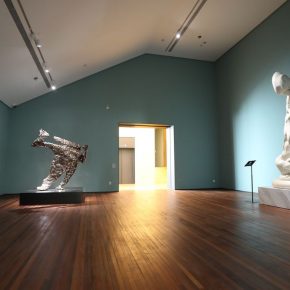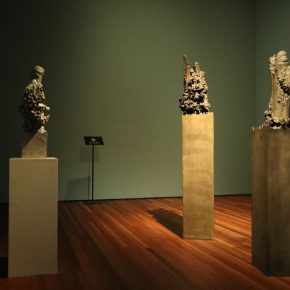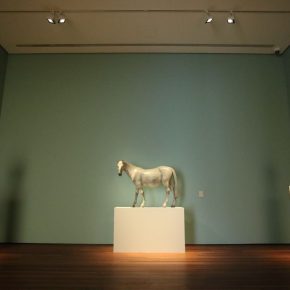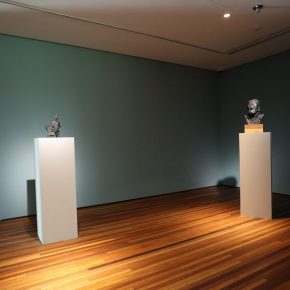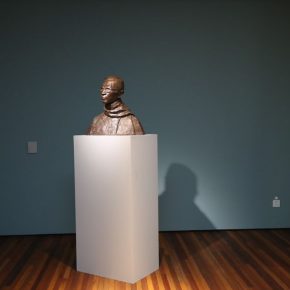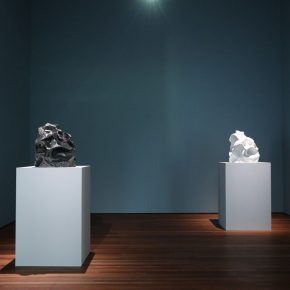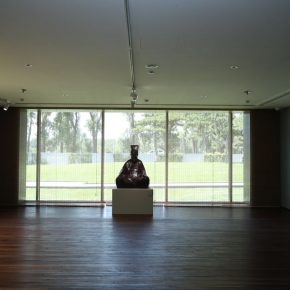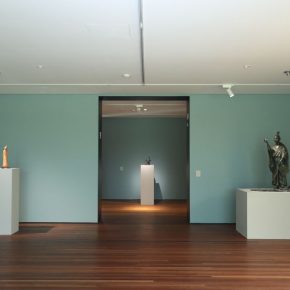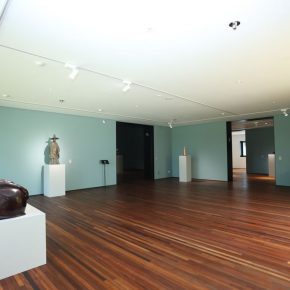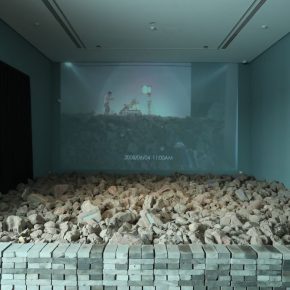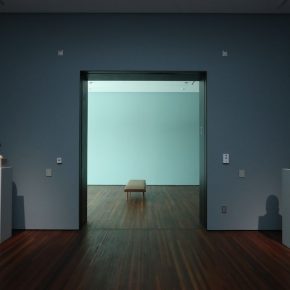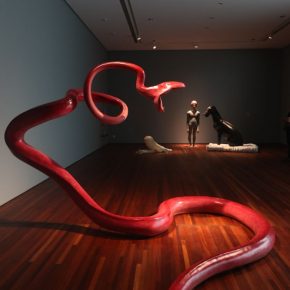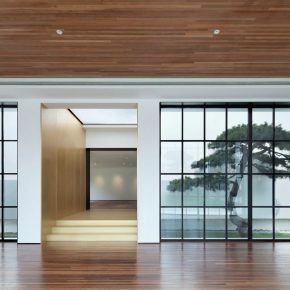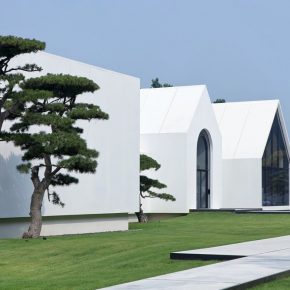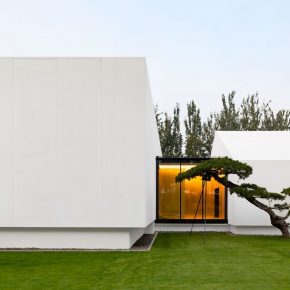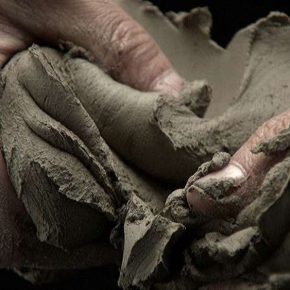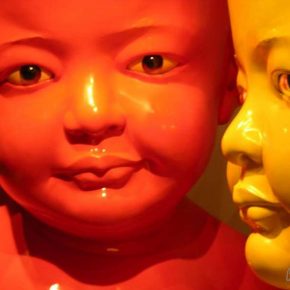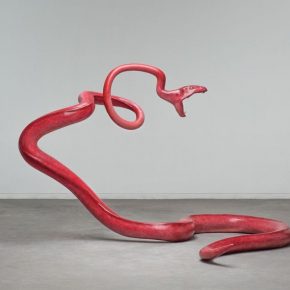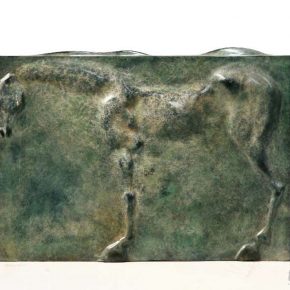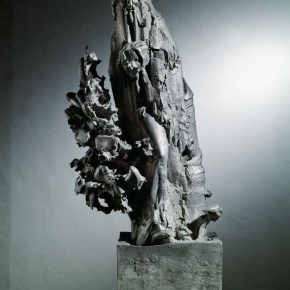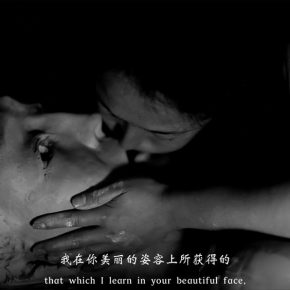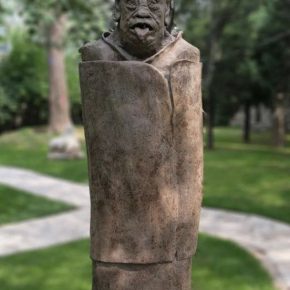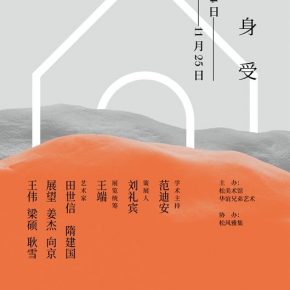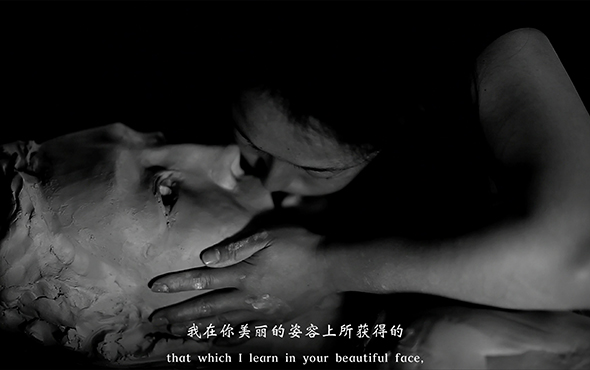
“Empathy” is usually interpreted from the perspective of the inter-relationship between people, and it is an idiom that expresses gratitude. If it is expanded, to include art works, as well as the relationship between the artist and the work and the relationship between the audience and the work, the connotation of this idiom can be greatly enriched. Through the exploration of this topic, as a curator, Liu Libin, an associate professor of the Central Academy of Fine Arts, chose several senior artists, middle-aged artists and young artists and planned a sculptural exhibition entitled “Empathy” at the Song Art Museum. The exhibition is divided into two parts: “Body Sensation” and “Awakening of Image”, which feature more than 40 sculptural works by Tian Shixin, Sui Jianguo, Zhan Wang, Jiang Jie, Xiang Jing, Wang Wei, Liang Shuo and Geng Xue.
“The sensuous noumenon value of art should be re-recognized and discussed within contemporary art in terms of creation and dissemination, and the exhibition of ‘Empathy’ presents an old and new topic.” Fan Di’an, Academic Director of the exhibition and President of the Central Academy of Fine Arts, said: “Although it focuses on a group of talented and full-fledged sculptors, it starts from the sensibility of art to showcase the sculptors’ connections between life experiences and modeling and the works present two distinctive features: on the one hand, when the artists expand the sculptural materials, the common material attributes are surpassed. They firmly grasp the unique experience of the material, understanding things with their hearts, touching things with emotion, so that the natural material attributes are intrinsically transformed into the form of creation, and results in a superb realm and they freely create without any hesitation. On the other hand, when the image is expressed, it transcends the appearance of the image, reaching the spiritual world of the self. These artists have broad academic ideas and strong expressions and they present a keen and candid temperament in terms of conveying feelings, perception and responses. From direct presentation to the refining of the works, the exhibition reveals the complex relationship between the soul and body, the spiritual attribute and reality, with a presentation of comfortable images and spiritual self-reliance.”
In the eyes of the curator, the idiom of “empathy” is expanded and is interpreted so that art works are introduced to the relationship between people. On the one hand, it aims to uncover the particularity of the relationship between the artists’ body and the material of the work (body sensation); On the other hand, it is intended to highlight the special perception and tactility brought by the artists’ careful treatment on the surface of the work (awakening of an image). At the same time, it awakens the resonance between the work and the audience by emphasizing these two points. This “resonance” is not only a visual pleasure in the general sense, but also a movement of the audience’s whole-hearted perception made by the work, which makes people “empathic.”
“Body Sensation”—Giving New Insights and Feelings
Either it comes from inner feelings and agitations, or it is from the shaping and awakening of various practices and techniques, each body has an opportunity to get a new life. The works by the sculptors also present these characteristics. Whether the works are representational or abstract, these “bodies” use them to break the skin and type what the previous “style” has given, and so becomes a new reality. At the same time, it gives us new insights and feelings. Sui Jianguo’s blind carving method aims to excluding the visual habits brought by education and activates the present body while the artist places himself in the state of a “blind person”. When Zhan Wang originally created the “Morph”, it reveals the reason for the stainless steel rockery refracting the bodies and imaging, which is a process of establishing the logical relevance of the works.
Liang Shuo’s “What is It” series of works can be regarded as his vigilance and reflection on “shaping”. The negative space created by pulling the sculptural clay gives to the entity, and the process of “non-form” which is also a process of highlighting the characteristics of the sculpture mud itself.
Geng Xue’s “The Poetry of Michelangelo” recorded the process when Geng Xue shaped a clay sculpture. When she was creating this work, she understood the poetry written by Michelangelo, and she also talked with the man she had shaped.
The creations of the sculptors Tian Shixin and Wang Wei exemplify another road. In short, many years of infiltration and persistence of representational sculptures have enabled them to achieve a subtle level of understanding and handling of sculptural materials.
“Awakening of Image” – Awakening of Color, and Awakening of the Image Itself
Since the image era, the color of sculpture has become a phenomenon, or become a way to remind and highlight the reality, or becomes a means of comic reality linking with history, virtual world or dreamy future; meanwhile it also becomes a weapon for irony and ridicule. The awakening of color refers to the awakening of the image itself, to awaken the reality. The awakening of color also refers to non-color, telling the contradictory of the appearance, namely its illusory nature.
Xiang Jing is used to taking the body as a reference, and the sculptural works are changed from the manifestation of divinity to the expression of humanity, and then the reflection of “non-humanity”. In addition to the advancement in the dimension of form, Jiang Jie’s creations have always contained a strong sense of criticism. In the work of “Zai”, the oversized baby’s head is monochromatic, so that the baby’s sentiment becomes stronger. When Zhan Wang talked about “The 86th Icon”, he said that he hoped that this statue was not only an ancestral icon, but also a conceptual sculpture. When it was placed in the ancestral hall, the people in the hometown also enter a process of conceptual thinking while they were worshiping. The descendants will question: What are the ruins and clay blocks below the statue? Why are they smashed? Why isn’t the 86th icon smashed? As Zhan Wang asks why we always build something after it has broken, can’t we build something unless it is broken? In fact, it is unfair that it only focuses on the “breaking” or “building”, and Zhan Wang hopes to directly face the “circular world”.
On the accession of the first anniversary of the opening of the Song Art Museum, once again a Chinese contemporary sculptural exhibition of “EMPATHY” with a discussion and thinking perspective was launched. These are large, or shocking, or delicate, or interesting art works which are brought together in the Zen natural atmosphere of the Song Art Museum, which presents a different “Song” art museum to the audience. In addition, the Song Art Museum will hold large-scale itinerant exhibitions – “Louise Bourgeois: The Eternal Thread”, together with the Long Museum, in March 2019, presents an excellent feast with sculptures and modern art in this pine forest. The EMPATHY is on view till November 25.
Text edited by Yang Zhonghui, translated by Chen Peihua and edited by Sue/CAFA ART INFO
Photo courtesy of the organizer


